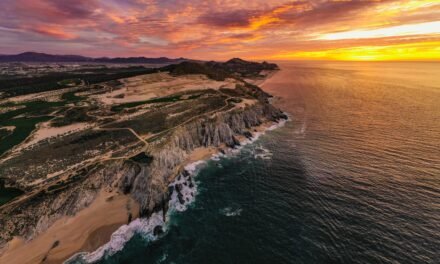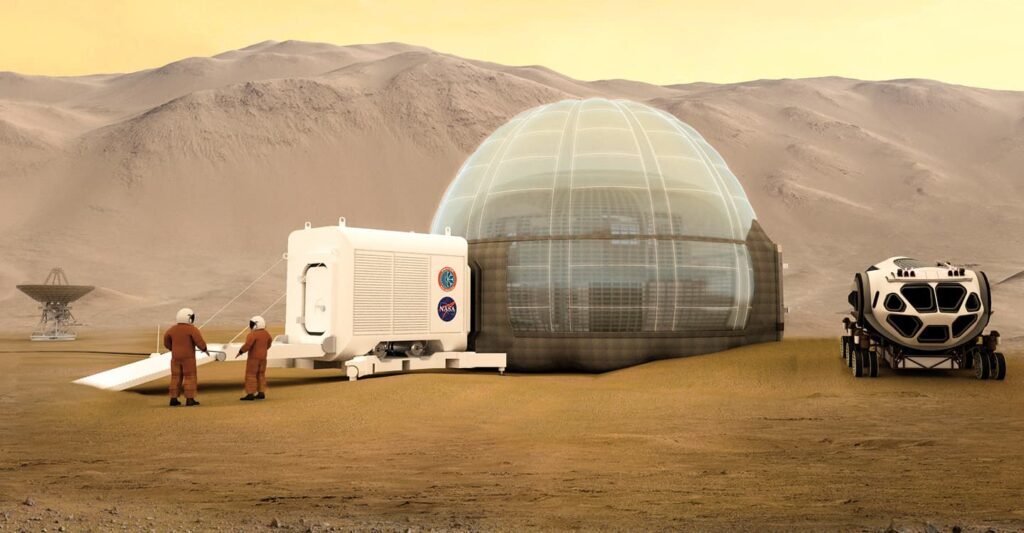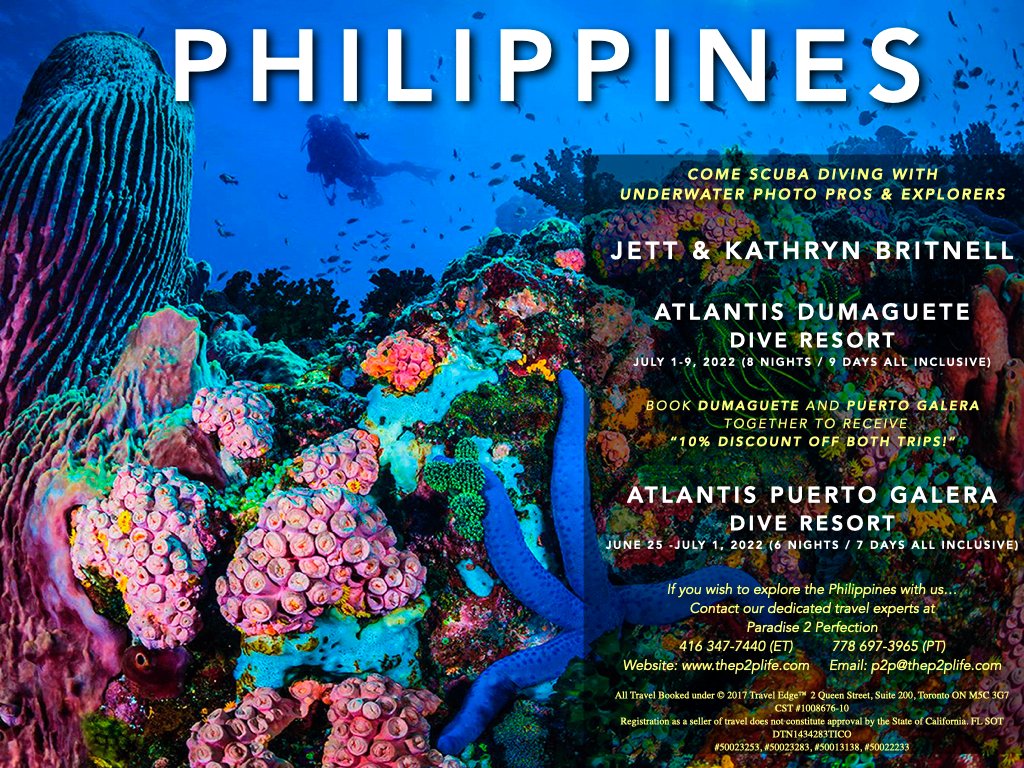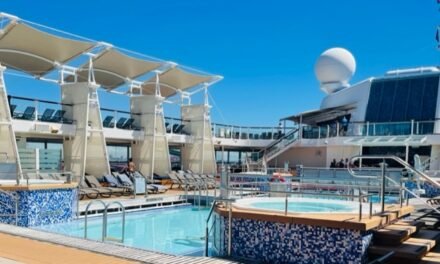
Exploring Mars from The Depths of a Canadian Lake
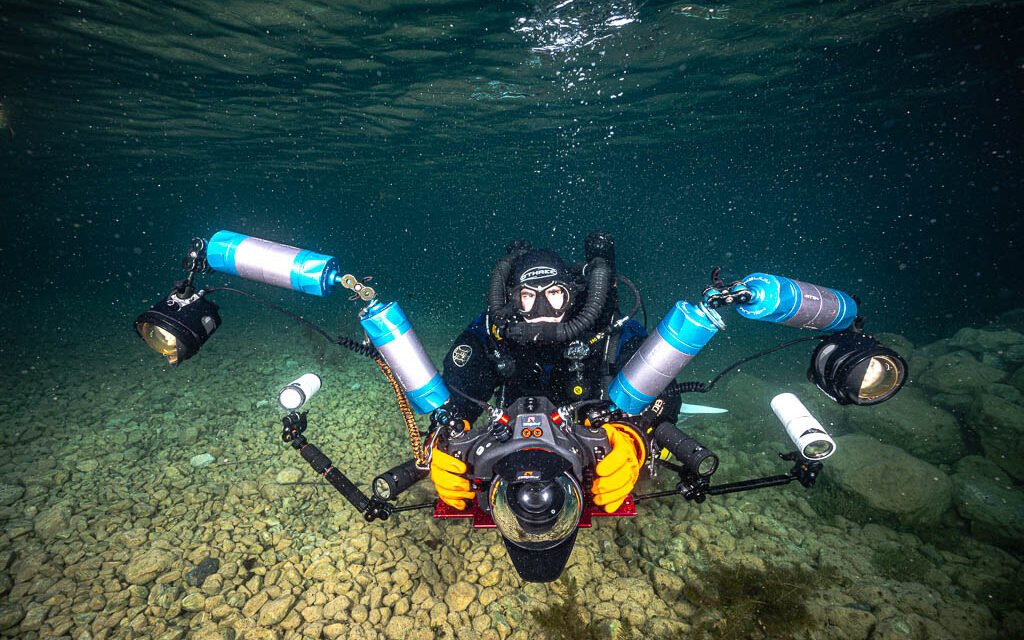
In late October 2020 one of my brothers from another mother, Michel Joseph, messaged me to ask if Kathryn and I wanted to go scuba diving in Pavilion Lake. Since Kathryn had some prior work commitments she could not reschedule, Michel and I made a lightening trip up to Pavilion. Michel had dived this lake numerous times before and for this visit we seized upon a window of opportunity between a provincial pandemic lock down, optimal weather conditions, and right before winter completely set in and the lake would freeze over.
Our objective was to explore and photograph the mysterious prehistoric calcareous organisms at the bottom of the lake that many people mistakenly refer to as being freshwater corals. To be exact, these rare formations carpeting the underwater slopes of the lakebed are one of the largest known colonies of freshwater microbialites on Earth. Microbialites are highly diverse microbial communities that represent modern examples of some of our planet’s oldest life forms, stromatolites, which form by accumulating fossilized remains of micro-organisms and other bacterial materials over thousands of years. Pavilion Lake’s microbialites date back 11,000 years, and resemble carbonate rock formations that flourished on Earth approximately 540 million years ago, which makes them one of the oldest living remnants of life.
Where is Pavilion Lake?
“Mars is there, waiting to be reached.” —Buzz Aldrin
Pavilion Lake is set amidst towering chalk-white cliffs of coloured limestone bordered by trees in picturesque Marble Canyon. The slightly alkaline, blue-green, spring-fed lake at the foot of the mottled limestone and dolomite cliffs is 2,690 feet (820 metres) above sea level and lies within the boundaries of the Marble Canyon Provincial Park, which is situated half way between the towns of Cache Creek and Lillooet, and is about a five-hour drive from Vancouver, British Columbia, Canada. It is not a particularly large body of water being 3.6 miles (5.8 kilometres) in length, ½ mile wide (0.8 kilometres) with a maximum depth of 213 feet (65 metres). Marble Canyon and its Pavilion Lake are a culturally significant and spiritual place for the Tk’emlúpsemc, “the people of the confluence”, First Nations now known as the Tk’emlúps te Secwe̓pemc. Concealed in the side canyons of the gorge there are important pictograph sites.
4TH Rock from The Sun
“Mars tugs at the human imagination like no other planet. With a force mightier than gravity, it attracts the eye to the shimmering red presence in the clear night sky.” — John Noble Wilford

This mosaic of Mars is composed of about 100 Viking Orbiter images. The images were acquired in 1980 during mid-northern summer on Mars. Photo Credit: NASA/JPL-Caltech/USGS
The question of whether life exists, or has existed, on Mars looms large in the human imagination. Often visible from Earth in the night sky with the naked eye, Mars is a dynamic planet replete with polar ice caps, extinct volcanoes, canyons, and changing seasons. This 4th planet from the Sun also has an exceptionally thin atmosphere which is essentially carbon dioxide, along with an extremely cold surface with an average temperature of -82 degrees Fahrenheit (-63 degrees Celsius). It is often called the “Red Planet” because its iron-rich dust gives the topography a rusty-red color. Which begs the question… “What can the bottom of a lake in British Columbia, Canada, tell us about a small planet orbiting just outside the Earth’s orbit, about 33.9 million miles (55.4 million kilometres) away?”
Pavilion Lake Research Project (PLRP)
Not long after Pavilion Lake’s microbialites colonies were discovered by scuba divers in the early 1990s, they soon attracted attention from the scientific community. Specifically, both NASA and the Canadian Space Agency were highly interested because these living structures represent one of our planet’s oldest living remnants of life. Astrobiologists believe that Earth and Mars probably shared similar early histories and that if life is discovered on Mars, it will likely be microbial. Hence, the study of microbialites here on Earth may help identify signs of life elsewhere in the universe. This scientific theory is not far-fetched as a Martian meteorite discovered in Antarctica in 1984 was recently confirmed to contain crystals that look eerily comparable to some created by bacteria here on Earth.
In early 2004, the Pavilion Lake Research Project (PLRP) was established as a joint NASA and University of British Columbia research project to conduct science and exploration of Pavilion’s lake bed. Their task to study the formation of Pavilion’s freshwater microbialites while endeavoring to explain their origin and preservation potential. The research and exploration methods PLRP developed studying Pavilion Lake’s freshwater microbialites over an 11-year period will contribute to future human mission planning and exploration science for both the Moon and Mars.
The PLRP’s principal mandate was simple enough. If scientists can recognize, or more accurately identify, what prehistoric life on Earth looked like, their search for life elsewhere in our universe should be more informed. Astrobiologists theorize that if life exists, or existed, elsewhere in our solar system it would most likely be a primitive life form. What researchers were looking for were bio-signatures that might help explain what ancient microbialites were like and compare them to modern day bio-signatures. Comprehending how modern microbialites grow and the bio-signatures they leave behind provides scientists with a glimpse into the past. Hence, if life did evolve on other planets, the structures at Pavilion Lake might also be similar to those preserved within our planet’s geologic record. This kind of historical analysis provides valuable information to scientists and astrobiologists in search of life on other planets.

Scientists who study Mars hope that NASA’s Perseverance Rover will find fossilized evidence of ancient microbial life. Drawing courtesy of NASA.
Where there is Water, there is Life!
“I don’t think the human race will survive the next thousand years, unless we spread into space. There are too many accidents that can befall life on a single planet. But I’m an optimist. We will reach out to the stars.” — Stephen Hawking
“Where there is water, there is life!” is an old adage of Astrobiologists. Whenever people pondered the possibility of there being water on Mars, it was often in the context about there being either ancient water or frozen water. However, there was a scientific breakthrough in 2017 when cumulative evidence from NASA’s Mars Reconnaissance Orbiter (MRO) provided scientists with findings that liquid water does indeed flow intermittently each summer on the Red Planet’s mountains, craters and canyons. Evidentiary proof that Mars may in the past, or in the present, been habitable for microorganisms. “Our quest on Mars has been to “follow the water,” in our search for life in the universe, and now we have convincing science that validates what we’ve long suspected. This is a significant development, as it appears to confirm that water, albeit briny, is flowing today on the surface of Mars” said John Grunsfeld, astronaut and associate administrator of NASA’s Science Mission Directorate in Washington.
Why Go to Mars?
“If an arduous and dangerous journey where you may not come back alive, but it’s a glorious adventure, sounds appealing, Mars is the place, that’s the ad. That’s the ad for Mars.” — Elon Musk
Many people believe that colonizing Mars will open the doorway to massive new developments such as, solar energy, food production, recycling, the advancement of medical technology, as well as establishing economic and political dominance in space and our ultimate long-term survival as a species. Those who are steadfastly opposed to colonizing Mars maintain it will cost too much and the billions of dollars to fund the effort could be put to better use fixing things here on Earth such as developing clean energy, curbing global warming, producing more food on less land, health care for all and putting an end to worldwide poverty.
No matter which camp people happen to fall into, the instinct to explore is seemingly hard wired into humankind’s collective DNA. A mission to Mars represents the next tangible frontier for human exploration and NASA believes it is an achievable goal. On the subject of sending humans to Mars, we will allow British doctor Alexander Kumar the last word. Kumar wrote about the pros and cons of going to Mars in a 2012 BBC News article, “Only by pushing mankind to its limits, to the bottoms of the ocean and into space, will we make discoveries in science and technology that can be adapted to improve life on Earth.”
Diving Deep for Extraterrestrial Life
“You’re so down to Earth, and I’m up in the stars. Show me the sea, and I’ll take you to Mars.” — Unknown
While I have wanted to dive Pavilion Lake for the longest time, I clearly ended up diving it at the right time. There was not another soul in sight other than the occasional car passing by us on Highway 99 in Marble Canyon. Michel and I had the entire lake bed all to ourselves for two entire days. BC Parks restricts scuba diving to three designated areas of the lake in an effort to help preserve and protect the fragile microbialites environment. While there are a lot of similarities to working in space and scuba diving, even a NASA astronaut would have been challenged by our entry point to dive the lake. The steep path was tricky to negotiate dressed in scuba gear while trying not to slip on the remaining snow that had fallen the night before.
At the surface the underwater visibility appeared to be crystal-clear, but underwater we noticed some backscatter or particulate matter in the water column due to recent weather. As we moved away from shore heading towards deeper water, we finned over thick fields of grass and other aquatic vegetation blanketing the lake bottom in the shallower depths down to about 30 feet (10 metres). Sunlight shimmering through the water column made Pavilion’s bottom appear bright. Here and there the occasional sunken log, twisted tree branches, and whitish clumps that resembled the shape of termite mounds found on land. Maintaining good buoyancy control was essential as the lake bottom is largely comprised of a powder-like white calcium carbonate sediment that’s easily disturbed by divers. What appears to be green gravel is anything but that and will turn to silt if disturbed.
At around 60 feet (18 metres) we found the microbialites motherlode. Colonies of microbialites carpeted flat stretches of the lake bed in varying densities and shapes that resembled large cauliflower florets, bulbous artichokes or coral bommies. At deeper depths the bottom transitions into steeper trenches where microbialites more than nine-feet (3 metres) high appear more like tall chimneys with spindle-shaped protrusions. It’s strictly hands-off with respect to the microbialites which are extremely fragile organisms that will and actually crumble if touched.
Pavilion Lake is a deep lake, more than 200 feet (60 metres) at its deepest. On this dive my maximum depth was 30 metres, and I still could have gone deeper were it not for our air supply running low. The lake is also inhabited by rainbow trout, along with some cut-throat trout and bull trout, but we did not see any fish during our dives, so they were undoubtedly hanging out in deeper water. Suffice to say, Michel and I had an absolute blast exploring Pavilion Lake’s mysteriously beautiful depths.
A Trip to Mars
“Mars is the only place in the solar system where it’s possible for life to become multi-planetarian.“ — Elon Musk
No, we are not talking about Thomas Edison’s 1910 film “A Trip to Mars.” Mars remains one of the most explored bodies in our solar system, and is the only planet where space scientists have sent and landed rovers to roam the Martian landscape. NASA’s next-generation Perseverance rover, the largest, most advanced rover NASA has sent to another planet touched down on Mars on February 18, 2021, after traversing 293 million miles (472 million kilometres) after a 203-day journey. A primary objective of Perseverance’s Mars mission is astrobiology, including the search for signs of ancient microbial life. Also, now far beyond the drawing board stage is NASA’s Orion spacecraft, designed for deep space missions to Mars or nearby asteroids for some time around 2025 or 2030.
English rock star Elton John once sang, “Mars ain’t the kind of place to raise your kids, in fact it’s cold as hell.” Elon Musk, CEO of Tesla and SpaceX, will not hear any of it since his self-declared aspirational goal is to transport both cargo and humans to the Red Planet and establish a permanent self-sustaining human settlement on Mars by sending one million people to Mars by 2050. A massive undertaking that would involve building 1,000 massive Starship rockets over a 10-year period and would require launching an average of three Starships per day to achieve Musk’s dream.
There’s No Place Like Home
A good friend listens to your adventures. A best friend makes them with you.” — Unknown

The Blue Marble Earth montage was created from photographs taken by the Visible/Infrared Imager Radiometer Suite (VIIRS) instrument on board the new Suomi NPP satellite – photo courtesy of NASA
Sending a manned mission flight to Mars is a fantastic adventure, but diving to photograph unexplained primitive life forms in a Canadian Lake is also pretty cool. It’s also closer to home and far easier to get to than the Red Planet. While no one has yet been able to figure out what these microbialites dating back to the Earth’s Precambrian times are doing at the bottom of Pavilion Lake, it’s fascinating to ponder that these strange calcareous organisms may one day be linked to new discoveries on Mars. Only time, will tell. In the meantime, there still remains much to be discovered here on planet Earth. So, whenever a best friend contacts you to ask if you are up for a quick adventure, always respond with a resounding, hell yeah!
Until our next dispatch, dare to Explore…Dream…Discover.
If You Go:
Scuba Diving Considerations:
Ideally, your first Pavilion Lake dive is with someone who has dived it before, and or with an organized dive group. Divers must also remember that Pavilion Lake is at 2,690 feet (820 metres) of altitude so high-altitude diving procedures are required. A basic guideline is to stay shallow and keep it short to limit the amount of accumulated gas in your tissue, and to be extra conservative during your ascent. It is commonly recommended high-altitude diving begins at 1,000 feet above sea level, so if you are unsure about the diving protocols, and making adjustments to your dive computer, seek out proper dive training.
One of Scuba Diving’s fashion icons, Michel Joseph, posing in his Mobby’s Drysuit. Seriously, wearing a drysuit in water this cold is safer and provides more thermal protection than a neoprene wetsuit, – photo by Jett Britnell
Proper thermal protection is a must as water temperatures in Pavilion Lake on average hover between 45-50 Fahrenheit (6-10 Celsius), so wearing a drysuit is highly recommended. Alternatively, a 7mm neoprene wetsuit will also work, however, not so much closer to winter when water temperatures drop as much as 10 degrees more. Good buoyancy skills are essential.
Accommodations: Presently, the nearest hotels and motels can be found in the two closest towns to Pavilion Lake, Cache Creek, 27 miles (43 km) east of the lake, or in Lillooet,27 ½ miles (44 km west) away. There are presently no public facilities or toilets in Marble Canyon Provincial Park, so if when day tripping there you must bring food and drinking water and whatever else you may need, and also take out any trash with you when you leave. More detailed information about the park can be found here: https://bcparks.ca/explore/parkpgs/marble_can
Wildlife: You’re likely to see big horn sheep by the highway outside of Cache Creek. Black bears and cougars are also in the area and should, naturally, be avoided.

Big Horn Sheep by the side of the highway just outside the town of Cache Creek – photo by Jett Britnell
Come Scuba Diving with Us in the Philippines!
Kathryn and I have made two previous diving trips to the Philippines and we’ve been longing to return. We are now booked to return to the Philippines June 25th to July, 9th, 2022 and this time we are staying and diving at the fabulous Atlantis Dive Resorts Dumaguete and Atlantis Dive Resorts Puerto Galera. Why go scuba diving in the Philippines? In 2006, international marine scientists proclaimed the Philippines, an archipelago with more than 7,000 tropical islands, as being the center of marine biodiversity in the world, surpassing even the Great Barrier Reef of Australia. Toss in unique Filipino cuisine, a colorfully rich culture, and exceedingly friendly locals. IF you have never been there before, you will fall in love. Come dive with us and experience scuba diving par excellence!
Who we are?
Atlantis Dumaguete is situated right on the beach and offers up some of the best scuba diving sites on the planet. Eco-tours to mountains, caves and local markets are among the topside activities available.
Often described as being one of the best dive resorts in the Philippines, Atlantis Puerto Galera is a beautiful beachfront dive resort built into the hills of Sabang Beach. All the best dive sites are close by.
Come dive with us at either resort, or both!
Book Dumaguete and Puerto Galera trips together to receive a “10% discount on both trips!”
Download a PDF of our Philippines Trip Promo: https://bit.ly/35TDVvq
You can find more information about the resort: https://atlantishotel.com
If you wish to explore the Philippines with us…
Contact our dedicated travel experts at
Paradise 2 Perfection
416 347-7440 (ET) 778 697-3965 (PT)
Website: www.thep2plife.com
Email: p2p@thep2plife.com
Email:randi@thep2plife.com


